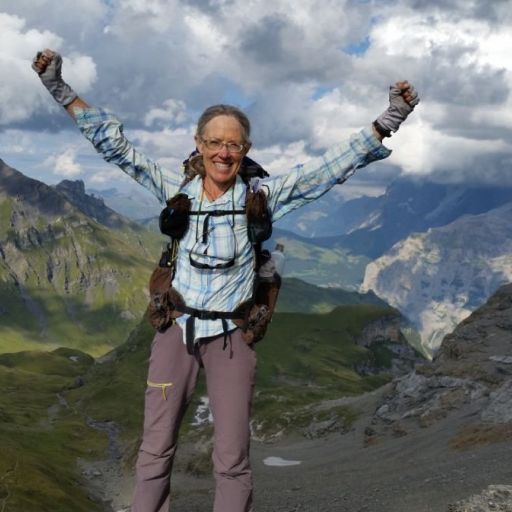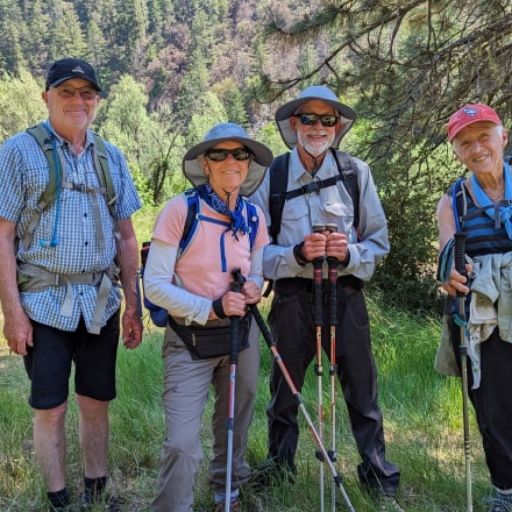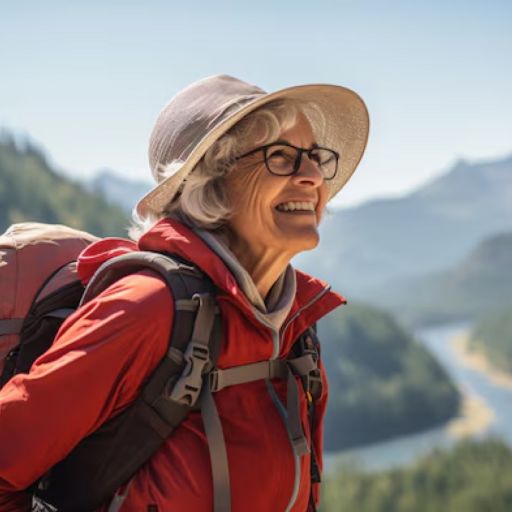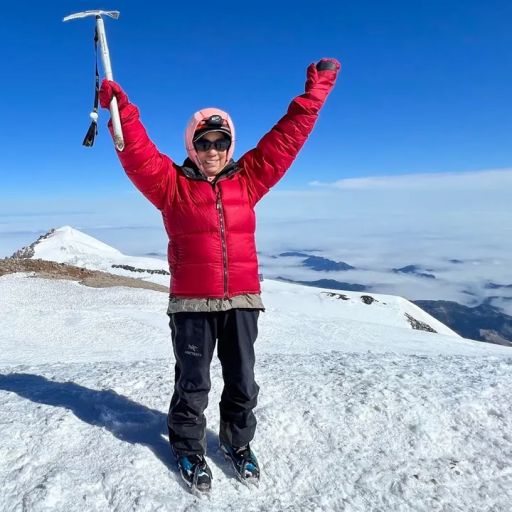When the autumn wind blows, the leaves are gradually dyed gold and red, when the winter snow falls, the earth is covered in silver, that is the call of nature.
For seniors who love life, hiking is an excellent way to get in touch with nature. In the fall and winter seasons, step on the colorful or pure mountain trails, feeling the change of seasons and the vitality of life.
1. Careful Preparation Before Hiking
Before deciding to embark on a fall or winter hiking trip, adequate preparation is the key to ensuring a safe and enjoyable experience. First of all, it is important to make a thorough assessment of your body. After all, as you age, your body may have some underlying health issues.
Consult your doctor to find out if you are physically fit for the more strenuous sport of hiking.
If you have chronic illnesses, such as heart disease or high blood pressure, be sure to prepare yourself accordingly by adjusting the dosage of your medication or carrying the necessary first-aid medication under your doctor's supervision.
Next, choosing the right peak is crucial. Consider your physical strength and mountaineering experience and choose peaks of moderate difficulty. Don't be attracted by too high an altitude or too steep a mountain; instead, choose peaks that have clear paths and relatively good facilities.
You can learn about the characteristics and difficulty level of different peaks by consulting travel books, mountaineering tips on websites, or asking experienced mountaineers for advice.
Understanding the weather conditions is also an essential step. The weather can be very changeable during the fall and winter seasons. It may be sunny one moment, and then cold and snowy the next.

Check the weather forecast ahead of time to get information on temperature, precipitation, wind, etc. so that you can prepare the right clothing and equipment. If inclement weather is forecast, such as heavy rain, snowstorms or gusty winds, you should decisively cancel your hiking plans, as safety always comes first.
When it comes to equipment, it is important to make a careful selection. Comfortable hiking shoes are the key, which should have good support, anti-skid and waterproof performance to ensure that they can provide stable protection for your feet under different road conditions.
Warm clothing is indispensable, from breathable and sweat-absorbent underwear in the inner layer, to fleece or wool sweater in the middle layer, to waterproof and windproof down jacket or down jacket in the outer layer, matching reasonably according to the weather conditions.
Pack a warm hat, gloves and a scarf to protect your head, hands and neck from the cold. Hiking poles can provide extra support and take the load off your legs. There is also a backpack, choose a model with moderate capacity and comfortable to carry, for carrying food, water, medicine, warm clothes and other necessary items.
Prepare a headlamp in case you need to light up when it gets dark early in the fall and winter months. In addition, carry a map and compass to familiarize yourself with the hiking route and prevent getting lost.
Keep your cell phone fully charged and carry spare batteries or rechargeable batteries to contact your family or seek help when needed. A first aid kit is also a must-have, which should contain band-aids, antiseptic solution, painkillers, cold medicine and other commonly used medicines, as well as first aid supplies such as bandages.

2.Wisdom in the process of mountaineering
When embarking on a hiking journey, you should keep a good mindset and the right approach. Perform appropriate warm-up exercises before departure, such as brisk walking and stretching, to move your joints and relax your muscles, so as to prepare for the upcoming challenges.
Control the speed of hiking and don't rush. Choose the right pace to move forward according to your physical condition. If you feel fatigued, you can slow down appropriately and rest for a while before moving on.
Maintaining proper posture is also important. Keep your head straight and your eyes flat in front of you for a better view of the road. Lean forward slightly, with your center of gravity resting on your forefoot to maintain balance.
Arms swing naturally to match your stride and provide extra power and balance. Be steady on your feet with a moderate pace. When going uphill, you can use small steps with the support of trekking poles; when going downhill, you should be careful and can use sideways descending to reduce the impact of your legs.
Reasonable arrangement of rest time. Generally speaking, you should take a break every 30 minutes to an hour. Choose a safe, flat and dry place to rest and avoid steep slopes, cliff edges or slippery places.
When resting, sit or stand, relax your body and adjust your breathing. Drink some water and eat a little light, easily digestible food to replenish energy and hydration. However, do not rest for too long as your body may become cold and stiff.
Pay attention to your diet and water intake. Carry lightweight, energy-rich foods such as nuts, energy bars, dried fruit, chocolate, etc. Eat some food at the right time to replenish your energy during the hiking process.
Also, drink water regularly to keep your body well hydrated. Don't wait until you are thirsty to drink because by then your body may already be in a state of dehydration. You can drink a small amount of water every once in a while, several times.

3. Unique charm of fall and winter season
Hiking in the fall and winter has a unique charm. In autumn, the leaves are colorful, as if they were nature's palette. Walking in the mountains, enjoying the beauty of red leaves like fire, yellow leaves like gold, feeling the tranquility and depth of autumn.
In winter, snow-covered peaks turn into a fairy tale-like ice and snow kingdom. White snowflakes cover the earth, and crystal ice hangings glitter on the branches, giving people a pure and serene sense of beauty.
Hiking in such an environment is not only a challenge for the body, but also a baptism for the soul.
The cool air of fall invigorates one's spirit, while the cold of winter tests one's will and endurance. Hiking in the fall and winter seasons also allows you to feel the changes in nature and the cycle of life.
Watching the leaves of the trees change from luxuriant to withered, and the snowflakes falling from the sky, we can more deeply appreciate the flow of time and the shortness of life, and thus cherish the present time more.
4. Health benefits of hiking
Hiking has many health benefits for the elderly. First of all, it is a good aerobic exercise, which can strengthen the cardiopulmonary function and improve the body's endurance and immunity.
During hiking, the body needs a lot of oxygen to supply muscle activity, which helps to exercise cardiopulmonary function and reduce the risk of heart disease and respiratory disease.
Secondly, hiking builds muscles and bones. Climbing hills requires the use of muscles in the legs, buttocks and back, which can be strengthened by long-term persistence in hiking.
At the same time, hiking can stimulate the growth and repair of bones and prevent osteoporosis. For the elderly, it is very important to keep muscles and bones healthy, and hiking is a natural and effective way to exercise.
In addition, hiking can relieve stress and improve mental health. Being in nature, breathing fresh air and enjoying the beautiful scenery puts people in a happy mood and makes them forget the worries and stresses of life.
Mountaineering can also develop perseverance and self-confidence, when we overcome the difficulties and climb to the top of the mountain, we will feel a great sense of achievement and self-confidence, this positive state of mind is very beneficial to mental health.

5. Safety always comes first
Safety is always the most important thing in mountaineering. Observe the rules of mountaineering, don't leave the route without authorization, and don't climb dangerous peaks or cliffs.
Pay attention to the road conditions and avoid walking in slippery, rugged and steep places. If you encounter difficulties or dangers, seek help in time. You can ask for help from other hikers, scenic staff or local residents.
Carry necessary safety equipment, such as map and compass, cell phone, first aid kit, etc. If you get lost, don't panic, stay calm, look for iconic objects or landmarks to determine your location and try to find the correct route. If you are unable to find the correct route, ask for help.
During the fall and winter months, the weather can be unpredictable, so always keep an eye on the weather. If you encounter bad weather, such as heavy rain, snowstorms or high winds, you should seek shelter in a safe place as soon as possible and wait for the weather to improve or seek rescue.

6. Relaxation and Summarization after Hiking
After hiking, don't rush home, but have a proper relaxation. You can perform some simple stretching exercises to relieve muscle fatigue and tension. Take a hot bath to promote blood circulation and relax your body and mind. Drink a cup of hot tea or hot soup to warm your body and rehydrate.
Review the hiking process and summarize the lessons learned. Think about what you did well during the hiking and what you need to improve. You can share these experiences with other hikers and prepare yourself for your next hiking trip.
A mountaineering trip in the fall and winter seasons is a close contact with nature, a challenge to the body and mind, and a realization of life. Let's bravely set foot on that mountain trail, feel the charm of nature, and enjoy the different splendor of senior life.
In the journey of life, no matter how old we are, we can pursue our own dreams, challenge our own limits, and discover the beauty of life.
Mountaineering is such a way to find our own happiness and fulfillment in the embrace of nature. May every senior who loves life be able to harvest full of happiness and memories from hiking in the fall and winter seasons.





